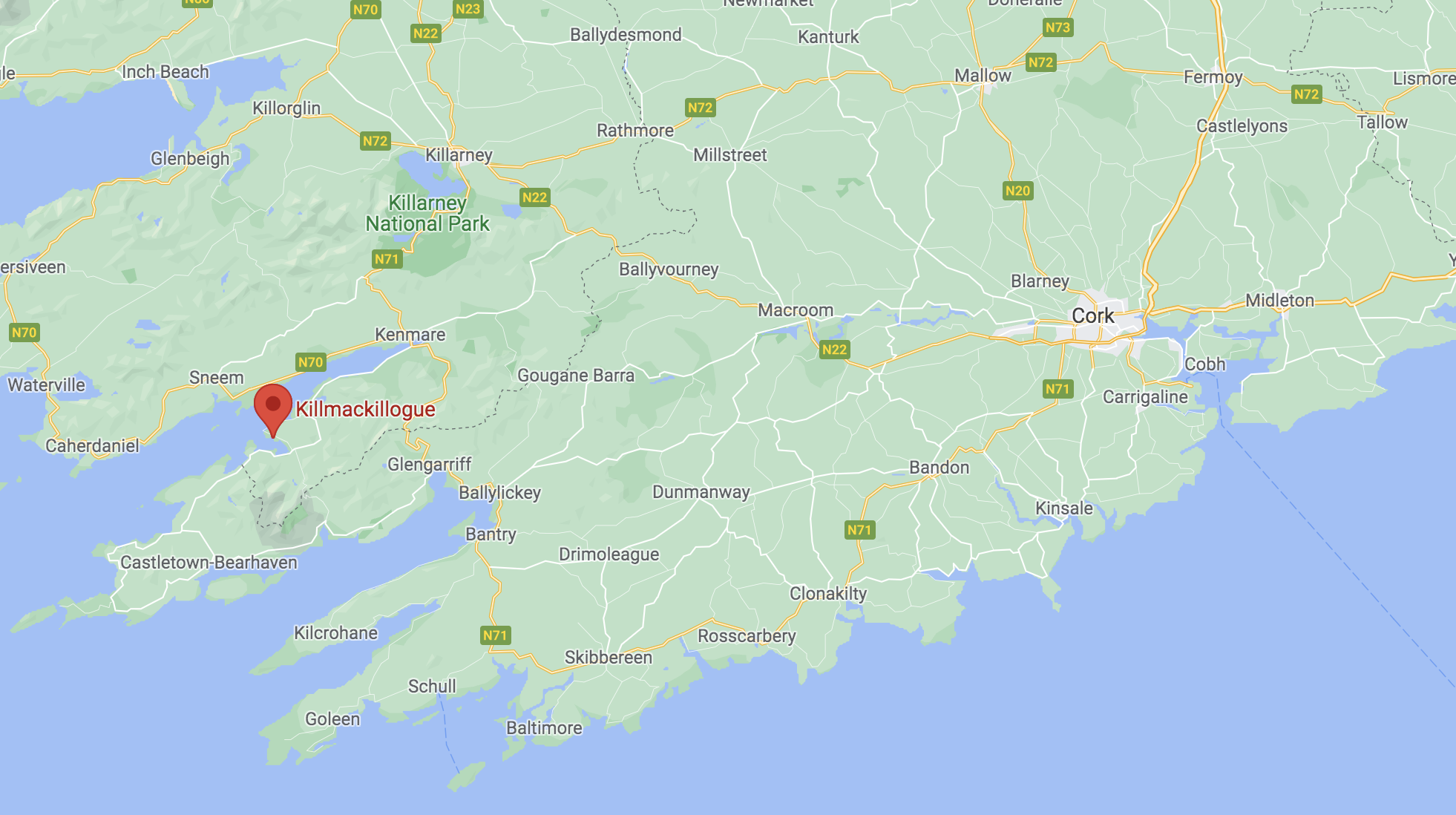Early O hLongadail Clan History
O'hLongadial, Urdail, O'Hingerdell, Harrington
A (very) thumbnail sketch of the early history of the O hLongadail..........
The great Book of Irish Genealogies
In the Great Book of Irish Genealogies Vol 6 (as compiled by Dubhaltach Mac Fhirbhisigh 1645-1666 from older texts) there is a genealogy for Ingardail, the man who founded our clan:
Forbasach son of Confhraochain son of Ingardail son of Brocain son of Garabin son of Riomhchon son of Murthuile son of Cuain son of Cabasain son of Continne son of Mogha Ruith
However there is no mention of time or place in the genealogy.
The Fir Maige Fene of Femoy
O'Murchadha in his book Family Names of County Cork states that in early texts, the family name of O hIongadail (Harrington) appears in a list of family names for a group known as the Fir Maige Fene who occupied lands in the Femoy area (Feara Maigh) of what is now known as County Cork.
He states that the tuath (the people, the smallest unit of a larger group, usually a single kinship group) of Ibh Ingardail occupied lands in the area of Conbaidh (Conva par Ballyhooly).
David Larkin in Irish Septs Vol 1 agrees and lists Harrington, Hingerdell and Hungerdell as members of a sept of the Fir Maighe Fene who were located in Conva, Ballyhooly. The larger group, the Maige Fene occupied lands from the Nagles Mountains to the Ballyhoura hills.
 |
| Conva, Ballyhooley, Co Cork near Fermoy |
Ireland at this time was a place of shifting alliances of tribes and clans made up of confederations of family groups who willingly, or unwillingly, pledged allegiance to the leaders of more powerful groups. Boundaries and tribal territories and affiliations were never static and changed in response to shifts in power amongst the various tribes and their members.
Ireland in 1014
By 1014, according to Wikipedia, Ireland was a patchwork of 'kingdoms' with the Eoganacht tribes in ascendancy across much of what is now known as Counties Cork and Kerry, then called Munster. The Eoganacht gradually gained in power and lands and their ascendancy may have caused the movement of the O'hIongadails (who were a non-Eoganacht group) southwards. Later the Eonganacht tribe lost power to other rival groups, most notably the Dal Cais.
 |
| Wikipedia |
After the Norman Invasions of Ireland in 1169 and 1171, the lands occupied by the various Irish groups were greatly disrupted and this would have also played a role in the movement of the Ui Ingarghail towards the south west of Ireland (Cork/Kerry).
Ireland in 1300
 |
| Wikipedia |
Moving ever south and westwards, the Ui Ingarghail established the townland of Kippaghingerghill in western Cork and are listed in this same area on the 12th Century surname map for Munster supplied by MacLysaght (look under the letter C in CORK).
 |
| MacLysaght Munster - Irish Families |
1500- 1600
In 1518 Donaldus Yhyngardeyll, the parish priest of Kilmackillogue (County Kerry) became the parish priest of Killcashlain (Kilcaskan?) and Kadmarra (Kenmare?) in the dioceses of Ross and Ardfert. This is the first reference to an individual belonging to this family name.
Harrington, and its earlier Anglicised form of O Hingerdell, is usually considered to be a west Cork name and certainly by the late 1500s there are many references to the name in the Bantry area.
From 1576 onwards a series of pardons are granted to various members of the O'Hingerdell family.
A place of residence is listed for Teig O Hingerdell alias O Hingerdell (i.e he is the chief of the clan). He is listed as being 'of Bantry'.
In 1597 Nicholas Browne listed O hIongardail as followers of O'Sullivan Beare (i.e the O'Sullivans of the Beara Peninsular near Bantry Bay).
After the loss at the Battle of Kinsale and the subsequent reprisals, the O Hingerdel/ Harrington name, while still prevalent in the Bantry area, is also found further afield-see the blog post "16th, 17th and 18th century Records" for dates, names and locations.
Summary
In summary, during tribal times, the early O Hingerdells were aligned with the Fir Maige Fenn in the Fermoy area.
They were gradually pushed down to the south west and aligned themselves with the O'Sullivans in the Bantry area.
Later, the Harrington surname remained in Cork, while Hingerdell variations (including Hingerty and Harrington) were also to be found in Tipperary, initially in the Cashell area and later further north in that county.
Before starting this research into the origins of the Hingerty surname, I believed the name to be from North Tipperary and was not aware of this earlier tribal history and the close connection with the Harringtons. What other discoveries lie ahead?
Leave a Comment or
Send an Email
hingerty@one-name.org






Comments
Post a Comment